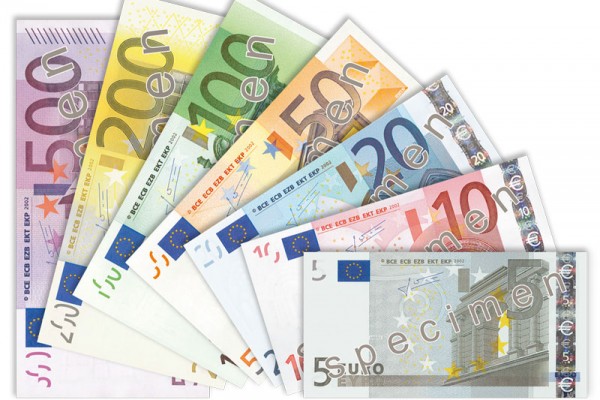Real Estate in Austria: Highest Annual Increase in Purchase Prices of Houses and Apartments Since Records Began
Prices on the Austrian residential real estate market show a year-on-year price increase of 12.3% for 2021. This is the highest annual increase since the index series began in 2010 and is significantly higher than in previous years.
 In a European comparison, the Austrian house price index averaged 11.5% over the first three quarters of 2021, outperforming the average HPI inflation rate for the euro area (+7.2%) and the European Union (+7.6%) over the same period last year. / Picture: © Wikimedia Commons / Blackfish [CC BY-SA 3.0 (https://creativecommons.org/licenses/by-sa/3.0)]
In a European comparison, the Austrian house price index averaged 11.5% over the first three quarters of 2021, outperforming the average HPI inflation rate for the euro area (+7.2%) and the European Union (+7.6%) over the same period last year. / Picture: © Wikimedia Commons / Blackfish [CC BY-SA 3.0 (https://creativecommons.org/licenses/by-sa/3.0)]
The House Price Index (HPI) for 2021 shows a price increase of 12.3%.
This is the highest annual increase since the start of the index series in 2010 and is significantly above the values of previous years (2020: +7.7%, 2019: +5.8%).
The general inflation rate according to the Consumer Price Index, which refers to price changes of consumer goods and excludes prices of assets such as houses and apartments, increased by 2.8% in 2021.
"In 2021, residential property prices in Austria increased significantly more than in previous years. The 12.3% year-on-year increase marks the highest price rise for privately purchased apartments and houses since the survey began in 2010. At the same time, we continue to observe a high level of activity in the real estate market: there were 9.6% more residential property purchases in 2021 than in the year before", according to Statistics Austria.
The house price index is based on purchases of new and existing houses and apartments made by private households, with actual transaction prices recorded and evaluated on a quarterly basis.
The strongest increases were recorded in the first half of the year (Q1: +3.6%, Q2: +4.3%, both quarter-on-quarter), which weakened only slightly in the second half of the year (Q3: +3.5%, Q4: +2.7%, both quarter-on-quarter).
Largest price increase for existing housing
The existing housing subindex recorded an increase of 14.2% in 2021, far exceeding the price dynamics of previous years (2020: +7.7%, 2019: +5.8%).
Within this group, condominiums in particular saw strong growth of +15.5% (2020: +7.0%, 2019: +6.7%).
Houses purchased by households for residential purposes also recorded a high year-on-year increase of +12.5% (2020: +9.2%, 2019: +4.6%).
The "purchase of new housing" subindex, which tracks the price trend for new apartments and prefabricated houses, showed less pronounced development. This rose by 7.3% year-on-year in 2021 (2020: +6.5%, 2019: +6.0%).
Price increases in all federal states
Vienna recorded the largest year-on-year increase in house prices with +18.6%, followed by Tyrol with +14.5% and Burgenland with +13.7%. Carinthia and Lower Austria were in the middle of the pack with +11.7% and +11.2% respectively. Upper Austria and Salzburg recorded increases of 9.6% and 9.2%, respectively. The lowest price dynamics on the housing market were seen in Vorarlberg with +8.7% and in Styria with +8.1%.
As for apartments, Lower Austria recorded the largest price increase with +12.7%, followed by Tyrol (+11.9%) and Salzburg (+11.7%). Carinthia (+11.1%), Vienna (+10.2%) and Upper Austria (+10.2%) formed the midfield here. The smallest increases were seen in Vorarlberg (+9.8%) and Styria (+8.2%). Among the provincial capitals, apartment prices rose most in Linz (+14.0%) and Innsbruck (+12.8%). The increases measured were somewhat lower in the city of Salzburg at 8.1% and in Graz at 6.0%.
Very high activity on the real estate market
The number of condominium transactions increased by 13.1% overall in 2021 compared with the same period in the previous year.
The sparsely populated areas showed the relatively largest increase here at +20.5%.
However, transactions also increased strongly in cities and larger municipalities, by +10.7% and +12.2% respectively.
For houses, the increases were smaller, so the transactions increased overall by only 2.7%.
In rural areas, house transactions increased by 1.5% and in the middle group of larger communities there was the largest increase of 5.2%. In large cities, the number of transactions decreased by 0.2%.
Nationwide, the number of purchases of apartments and houses by private households in 2021 increased by 9.6% year-on-year.
Above-average price development also internationally
In a European comparison, the Austrian house price index averaged 11.5% over the first three quarters of 2021 (the 4th quarter will not be published internationally until April 2022), outperforming the average HPI inflation rate for the euro area (+7.2%) and the European Union (+7.6%) over the same period last year.
Compared with the six neighboring EU countries, house price index changes were higher only in the Czech Republic (+17.4%) and Hungary (+11.6%).
In Germany, house prices increased by 10.6% and in Slovenia by 10.1% in the first three quarters of the year.
Slovakia and Italy showed more moderate house price increases of +4.9% and +2.1%, respectively.
Price index for owner-occupied housing up 6.5 percent
The price index for owner-occupied housing (OOH) is an extension of the house price index.
It includes expenses associated with the acquisition and ownership of housing, such as fees of acquisition, insurance, and costs of repairs and renovations, in addition to the acquisition of new and existing housing.
This index increased by 6.5% in 2021 (2020: +4.1%, 2019: +3.9%) and had an annual average index level of 145.34 points in 2010.
The sub-index for the prices of the acquisition of housing increased by 8.3% (2020: +4.9%, 2019: +4.5%), with the high increase in the cost of construction for self-builders and in major renovations also having a large impact in 2021, at 8.1% (2020: +3.2%, 2019: +3.3%).
The price of expenses for the maintenance of owner-occupied housing increased by 3.6% in 2021 (2020: +2.8%, 2019: +2.9%).



